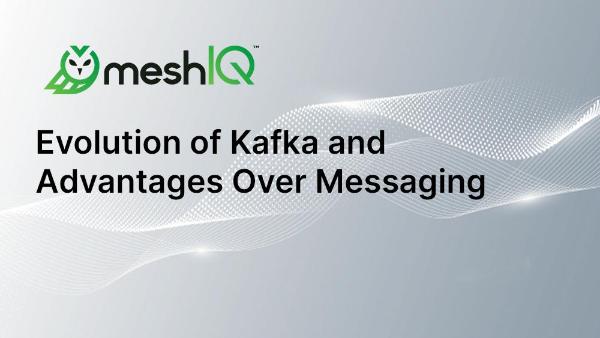Evolution of Kafka and Advantages Over Messaging
Apache Kafka has come a long way since its initial development at LinkedIn in 2010 and its release as an open-source project the following year. Over the past decade, it has grown from a humble messaging bus used to power internal applications into the world’s most popular streaming data platform. Its evolution is remarkable, and it has taken the industry by storm, quickly becoming a go-to solution for data streaming and processing.
Today, Apache Kafka is used by some of the most influential names in technology, from global corporations to small startups. This blog aims to provide insight into the evolution of Apache Kafka since 2010 and why it continues to be a popular choice for streaming data and the use cases where its preferred over traditional messaging platforms.
The Beginnings of Kafka
Apache Kafka was first developed in 2010 at LinkedIn as a distributed stream processing framework. At the time, the challenge was to address scalability for real-time data feeds, and the company’s initial data system was built on Apache™Hadoop®. As they began re-engineering their infrastructure, they realized that operationalizing and scaling the system required a considerable amount of work.
That led to the development of Kafka as a distributed system that could connect applications, data systems, and organizations for real-time data flow. This goal has since been achieved, leading to Kafka’s current status as an industry-leading messaging middleware platform.
Apache Kafka has grown in popularity and is now an integral part of many companies’ data streaming infrastructure. With its scalability, reliability, and robustness, Kafka has enabled businesses to streamline their data processing operations and reliably transport large volumes of data across applications.
The Evolution of Kafka’s Features Over Time
Apache Kafka’s features have evolved over an extended time period, allowing it to adapt to the changing needs of businesses and developers. The platform has become more secure, reliable and efficient, as well as offering new features such as stream processing and data governance.
Kafka Connect has also been introduced, making it easier for organizations to integrate their data sources with the platform. Furthermore, Kafka’s cloud-native architecture has allowed organizations to take advantage of managed services and abstract away the operational efforts associated with running a distributed system. All these features have enabled Apache Kafka to become the leading messaging middleware platform it is today.
Solutions for Kafka Monitoring
As Apache Kafka has evolved to support mission critical use cases, the monitoring and observability needs have grown as well. meshIQ’s Navigator delivers observability and management into Apache Kafka. It provides a single pane of glass observability of all Kafka instances, spanning clusters, topics, brokers and more.
Users can drill down into the data to to see in real-time exactly what is going on within the Kafka cluster. There are also out-of-the-box alerting capabilities, so it is easy for the developers to understand where any potential problem may be coming from and what can they do to prevent that problem from causing a production outage.
Apache Kafka vs IBM App Connect Enterprise vs IBM MQ
Apache Kafka was developed at around the same time as several other prominent middleware stack and Message Queuing applications, including IBM App Connect Enterprise (ACE) and IBM Message Queuing. It is, therefore, unsurprising that these are some of the major players in the messaging middleware space today.
Most comparisons of the features in each of the solutions tend to come out reasonably even across the board, with some users preferring the no-coding approach taken by IBM ACE to that of Apache Kafka. Having said that, others praise the safety and security of Apache’s cluster and the relief of knowing that if one node fails, other nodes will seamlessly take its place with no interruptions to services.
Apache Kafka is considered to be significantly faster than IBM MQ, so this is advantageous in an environment where message delivery speed is of the essence. Apache Kafka also scales well across a distributed environment and is optimized for this use case. It also delivers large scale data replication via Mirrormaker (and new Replicator) where data is continuously replicated in a geographically distant location for backup or failover.
All of these systems are of exceptionally high quality, with reviews by industry professionals consistently putting each solution at somewhere near four and a half out of five stars. This means you can be sure that whichever you choose for your business, you are purchasing a messaging middleware solution that has been tried and tested rigorously in the field and is being consistently improved upon with each new iteration.

